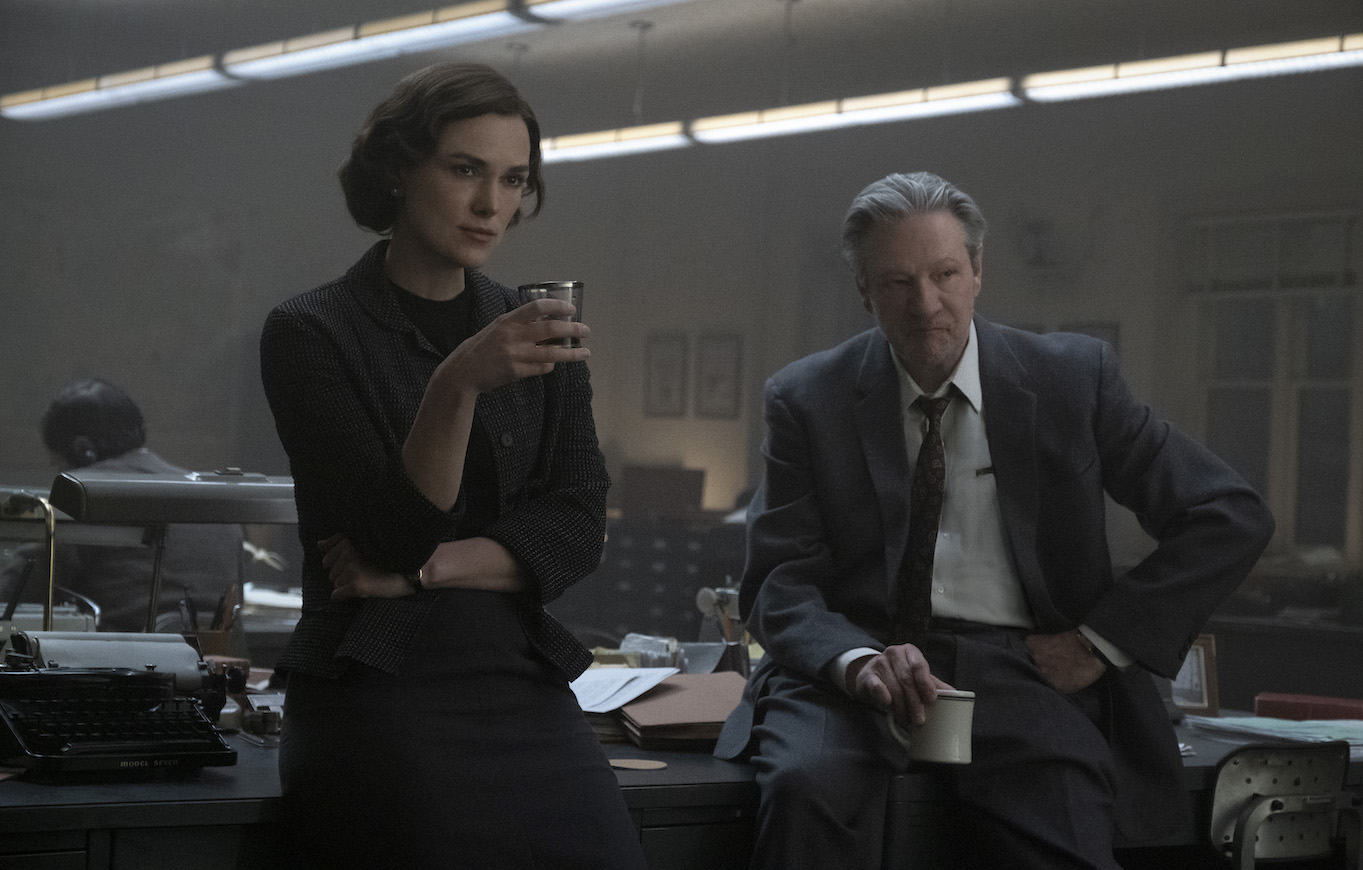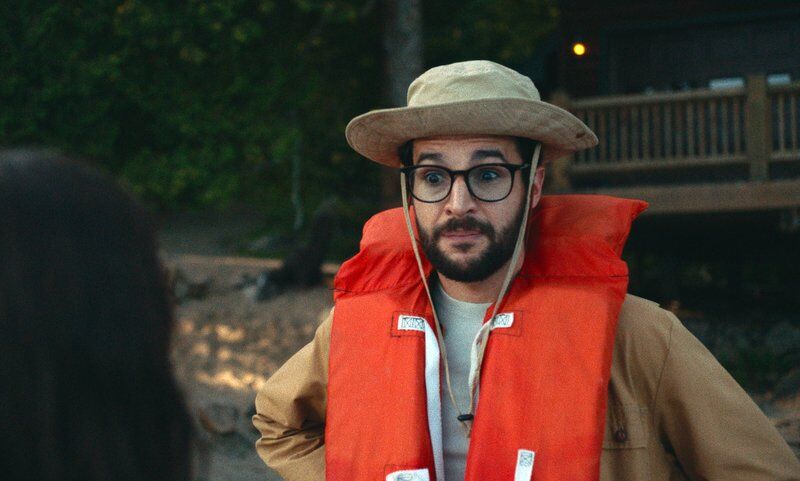I went in to this movie knowing that there was a Boston Strangler… a serial killer … that um, strangled his victims. Because I’m wicked smahht like that (that’s me typing out a Boston accent, chill.) But otherwise, I just really didn’t know anything at all. So I actually found this “retelling” of this investigative journey interesting. Maybe this film would do better if I had seen a first telling to counter with, I might have liked it even more? But as it was, it was a decent movie with a lot of really good information that it wasn’t afraid to grapple with.
Boston Strangler Walkthrough
The movie tells the story of Loretta McLaughlin as a reporter at Boston Record American who is struggling to get on the violent crimes beat. We watch as she diligently and meticulously tracks stories around the region and begins finding connections between disparate murders. And when she is able to confirm that three (actually four in real life, but we’ll get to that in a moment) women have all been murdered via strangulation, and have stockings tied around their necks in a bow. It is Loretta who makes it clear that the Boston area had a serial killer on their hands. Quickly, the local police begin a pressure campaign to force the paper to retract the story.
But, in 1963, when a seventh murder occurs, the demographic shifts dramatically to a much younger than previous individual. And as Loretta, and her partner Jean, dig deeper, they start to realize just how badly the Boston Police are screwing up this investigation. Leads are being dropped. Good ideas with real potential behind them are being ignored. Other local police departments aren’t being listened to. Etc., etc.
When Albert DeSalvo is arrested – he is not identified in a line up. George Nassar is instead. But even in spite of that, DeSalvo confesses to murdering all 13 women. But the police can’t tie him back to the murders, so instead, they convict him of lesser (robbery/rape) crimes instead. Regardless, he’s sentenced to life in prison… so that is a win for the department, but it is a slight to the families of the dead.
Two years later, Loretta then discovers that in Michigan, there have been six murders that exactly match the Boston Strangler’s murder details. So she heads to Ann Arbor to learn as much as she can, and ultimately realizes that Daniel Marsh seems to be the most likely suspect. Marsh was an ex-boyfriend of one of the victims, but when he is arrested he refuses to assist the police in any way. Then in 1973, DeSalvo calls Loretta out of the blue and asks her to come to visiting hours to listen to the details about the story from his own perspective. But that same day he is stabbed to death in prison.
After getting a tip – Loretta discovers that all three murder suspects, DeSalvo, Marsh, and Nassar were all committed in the same ward at the same time. And the tip also hints that DeSalvo’s complete confession was made up whole cloth… being coached by Marsh and Nassar. After visiting Nassar in prison he denies the coaching but admits he wanted the reward money. More importantly, Nassar accuses Loretta of following the “Boston Strangler” hype, instead of the facts. And that instead of a single murderer, there were several. But that that was fact that the community of Boston can’t cope with. That it would be a much too scary realization for the people of Boston to find that there were several horrible serial killers on the loose.
And that is when Loretta and Jean develop a new theory that they run in the Record American. Which was that Dempsey killed the first six older women. Then when the murders shifted to younger women? That was when the copycat murders began. They also posited that DeSalvo’s confession was done so that Nassar could receive $10k per victim. And as a result, Nassar made it possible for DeSalvo to get a high powered lawyer, F. Lee Bailey. And DeSalvo was deceived into thinking he’d get a million dollar book deal that he could use to support his family.
The epilogue tells of Loretta becoming an award-winning medical reporter at The Boston Globe. Jean continued working as a reporter for 30 years. She and Loretta remained close friends. Marsh was never charged with murder. Nassar remains in prison as of 2023, and never received any reward money. In 2013, DNA evidence linked DeSalvo to the 13th murder, but not the other 12.
The Historical Inaccuracies of Hulu’s Boston Strangler
The film makers, admit, from the beginning, that the film is inspired by true events. So what, pray tell… does that mean? It’s true that the core details – names, dates, locations – are all fact. The only glitch however, authorities, authors and many other people familiar with the murders are still in disagreement about whether DeSalvo could have been the sole killer or if the murders could have been committed by several murderers… which is what the movie posited as I mentioned above.
There were several key inaccuracies that came from the condensed timeline depicted in the film. I could detail the bumpy timeline and correct the timeline, but suffice it to say that the film plays a bit fast and loose with the details of who died when and the orders, etc. (For example, in the film, it depicts the copycat murders as occurring in 1965, but actually? They occurred between 1967 and 1969. You get the idea.)
Similarly, there were a number of other key details that missed the mark. For example:
- There is no Detective Conley… Conley was a conglomeration of a number different Boston Detectives.
- Loretta and Jean? They didn’t meet just before their work began together on the case. They actually met about 10 years prior.
- The film tells the story that DeSalvo had called Loretta prior to getting murdered the next day. But actually? He called his psychiatrist Dr. Amos Robey prior to being murdered.
- And similarly, “Daniel Marsh” doesn’t exist. The name is actually a pseudonym given for a suspect who’s information has never been publicly released.
But we sort of expect that a modern film is going to do what it needs to do to keep the story moving and make it more exciting. That Loretta was the connection to DeSalvo prior to his being murdered? Definitely more exciting than the alternative.
The Reviews for The Boston Strangler
I was pretty shocked how widely savaged this show was. “Dark,” “Meandering,” “Lacking Visual Appeal”… etc. It was pretty much savaged in the press. Which, was interesting to me. To be clear, I didn’t think it was stellar in any way. But I enjoyed learning about the murders, and some of the details were really intriguing. It’s a complicated story to tell, I’m sure. But to savage the film left me wondering. Was it more that the film was shifting the focus and credit away from the real police work? Was it anything to do with it being a story about two underappreciated women? Could it be that that is all that is going on here? I mean, I hope not… it is good that all the misogynists are dead… and that we’ve managed to grow up out of this issue. I mean, right? RIGHT? Bah. I don’t know.
I actually thought the visual cues of the film to be really beautiful and distinct. I loved the bokeh effect the film’s cinematography utilized. Seemed to blur the edges, and crystal clear the center… especially outside on the streets of Boston. I found that really appealing. And the acting was good, if a smidge overly earnest. But what do you expect on a case like this? Earnestness! hahah. So, I enjoyed it anyway. And when I can learn something at the same time? I’m usually all in.
Are you interested in other investigative movies like this one – then maybe you should check out:
I know… pretty great right? Come for the movie walkthrough, and stay for the bulk list movie recommendations.
Edited by: CY


